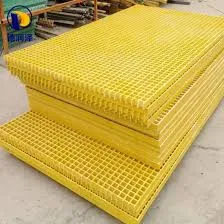
-
 Afrikaans
Afrikaans -
 Albanian
Albanian -
 Amharic
Amharic -
 Arabic
Arabic -
 Armenian
Armenian -
 Azerbaijani
Azerbaijani -
 Basque
Basque -
 Belarusian
Belarusian -
 Bengali
Bengali -
 Bosnian
Bosnian -
 Bulgarian
Bulgarian -
 Catalan
Catalan -
 Cebuano
Cebuano -
 China
China -
 China (Taiwan)
China (Taiwan) -
 Corsican
Corsican -
 Croatian
Croatian -
 Czech
Czech -
 Danish
Danish -
 Dutch
Dutch -
 English
English -
 Esperanto
Esperanto -
 Estonian
Estonian -
 Finnish
Finnish -
 French
French -
 Frisian
Frisian -
 Galician
Galician -
 Georgian
Georgian -
 German
German -
 Greek
Greek -
 Gujarati
Gujarati -
 Haitian Creole
Haitian Creole -
 hausa
hausa -
 hawaiian
hawaiian -
 Hebrew
Hebrew -
 Hindi
Hindi -
 Miao
Miao -
 Hungarian
Hungarian -
 Icelandic
Icelandic -
 igbo
igbo -
 Indonesian
Indonesian -
 irish
irish -
 Italian
Italian -
 Japanese
Japanese -
 Javanese
Javanese -
 Kannada
Kannada -
 kazakh
kazakh -
 Khmer
Khmer -
 Rwandese
Rwandese -
 Korean
Korean -
 Kurdish
Kurdish -
 Kyrgyz
Kyrgyz -
 Lao
Lao -
 Latin
Latin -
 Latvian
Latvian -
 Lithuanian
Lithuanian -
 Luxembourgish
Luxembourgish -
 Macedonian
Macedonian -
 Malgashi
Malgashi -
 Malay
Malay -
 Malayalam
Malayalam -
 Maltese
Maltese -
 Maori
Maori -
 Marathi
Marathi -
 Mongolian
Mongolian -
 Myanmar
Myanmar -
 Nepali
Nepali -
 Norwegian
Norwegian -
 Norwegian
Norwegian -
 Occitan
Occitan -
 Pashto
Pashto -
 Persian
Persian -
 Polish
Polish -
 Portuguese
Portuguese -
 Punjabi
Punjabi -
 Romanian
Romanian -
 Russian
Russian -
 Samoan
Samoan -
 Scottish Gaelic
Scottish Gaelic -
 Serbian
Serbian -
 Sesotho
Sesotho -
 Shona
Shona -
 Sindhi
Sindhi -
 Sinhala
Sinhala -
 Slovak
Slovak -
 Slovenian
Slovenian -
 Somali
Somali -
 Spanish
Spanish -
 Sundanese
Sundanese -
 Swahili
Swahili -
 Swedish
Swedish -
 Tagalog
Tagalog -
 Tajik
Tajik -
 Tamil
Tamil -
 Tatar
Tatar -
 Telugu
Telugu -
 Thai
Thai -
 Turkish
Turkish -
 Turkmen
Turkmen -
 Ukrainian
Ukrainian -
 Urdu
Urdu -
 Uighur
Uighur -
 Uzbek
Uzbek -
 Vietnamese
Vietnamese -
 Welsh
Welsh -
 Bantu
Bantu -
 Yiddish
Yiddish -
 Yoruba
Yoruba -
 Zulu
Zulu
Exploring the Impact of Pipe Utilization on RTRP Performance and Efficiency
Exploring the Role of RTRP Pipe in Modern Infrastructure
In recent years, infrastructure has become a focal point of discussion in global economic development. As cities expand and populations increase, the need for robust and efficient systems has never been more pressing. Among the myriad components that contribute to a well-functioning urban environment, the RTRP pipe—short for Reinforced Thermoplastics Pipe—emerges as a pivotal feature in modern piping systems. This article aims to explore the advantages, applications, and future of RTRP pipes in infrastructure.
Understanding RTRP Pipe
RTRP pipes are engineered from a composite material that combines thermoplastic resins with reinforcing fibers. This results in a product that not only boasts resilience against harsh environmental conditions but also delivers superior performance in various applications. The advanced properties of RTRP pipes make them appealing for industries such as water management, renewable energy, and telecommunications.
Advantages of RTRP Pipes
One of the standout features of RTRP pipes is their exceptional strength-to-weight ratio. Compared to traditional piping materials such as steel or concrete, RTRP pipes are significantly lighter, which eases installation and reduces transportation costs. Additionally, their corrosion resistance outshines that of metal pipes, leading to longer service life and lower maintenance costs.
Another remarkable advantage is the thermal stability of RTRP pipes. They can withstand a wide range of temperatures, making them suitable for both cold and hot applications. This property is particularly beneficial in regions with extreme weather variations, ensuring reliability in diverse climatic conditions.
Also notable is the flexibility of RTRP pipes. Their adaptability allows for installation in challenging terrains, including those with uneven surfaces or complex layouts. This feature enhances the efficiency of installation projects, allowing for quicker completion times and minimal disruption to the surrounding environment.
rtrp pipe

Applications in Modern Infrastructure
Due to their myriad advantages, RTRP pipes are finding applications in various sectors. In water infrastructure, they are increasingly utilized for potable water distribution, wastewater management, and stormwater drainage. Their durability and resistance to contaminants make them an optimal choice for maintaining water quality.
In the realm of renewable energy, RTRP pipes are used in solar thermal systems and geothermal applications. Their capability to handle diverse thermal conditions contributes to efficient energy management and sustainability efforts.
Telecommunications, too, benefits from the deployment of RTRP pipes. With the exponential growth of data and the demand for high-speed internet, these pipes are essential for housing fiber optic cables. The lightweight and strong nature of RTRP enhances the longevity and reliability of communication networks.
The Future of RTRP Pipes
As we move toward a more sustainable future, the demand for eco-friendly materials is on the rise. RTRP pipes are produced with a focus on reducing environmental impact. Many manufacturers are now incorporating recyclable materials into their processes, further enhancing the green credentials of these pipes.
Moreover, as smart city initiatives continue to trend, the integration of RTRP pipes with smart technologies is anticipated. For example, sensors embedded within the pipes could monitor water quality in real-time, providing valuable data that can inform infrastructure management practices.
In conclusion, the RTRP pipe represents a significant advancement in piping technology, combining strength, flexibility, and sustainability. Its versatility across various applications highlights its critical role in modern infrastructure. As cities and industries continue to evolve, the innovative use of RTRP pipes is likely to increase, paving the way for a more efficient and sustainable future. Embracing such advanced materials is not just advantageous; it is essential for the development of sustainable infrastructures that support contemporary and future societal needs.









